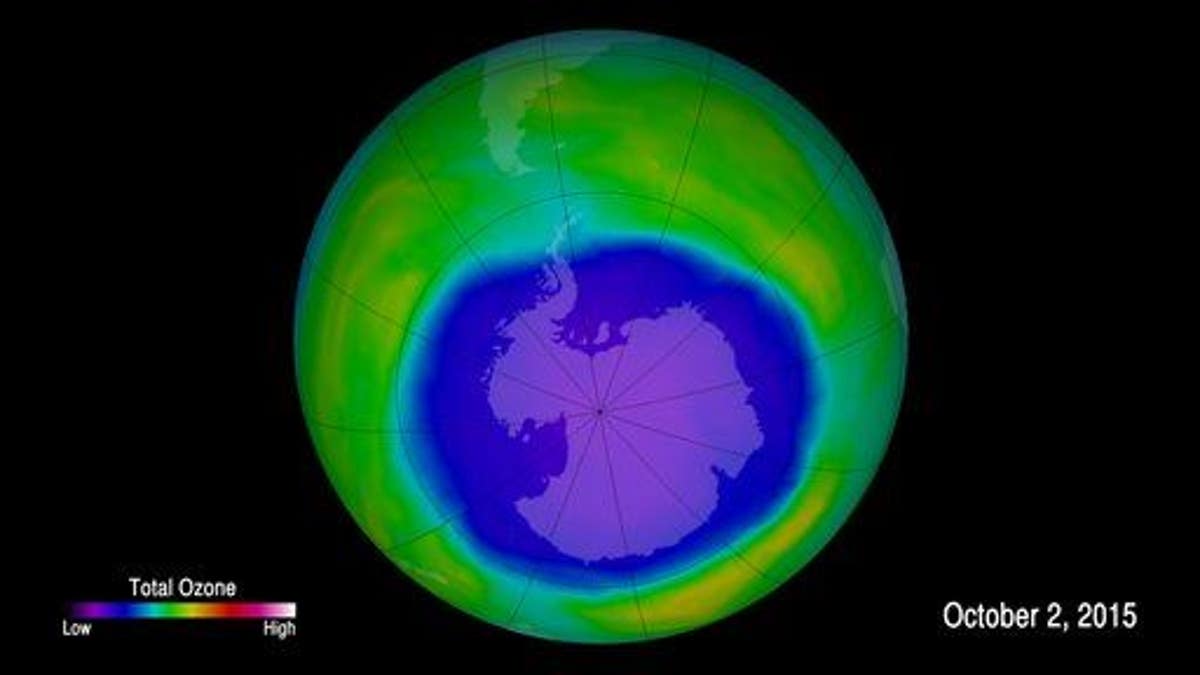
This image provided by NOAA shows the ozone hole. (NOAA via AP)
Scientists who assumed the infamous ozone hole over Antarctica was steadily shrinking received an unpleasant surprise last month: The hole is approaching a size unseen in nine years, Popular Science reports.
According to Live Science, in October researchers at the German Aerospace Center recorded the size of the hole in the ozone layer as 10 million square miles—larger than the entirety of North America.
That's the biggest it's been since 2006, when it set a record of 10.42 million square miles, Popular Science reports. That's bad news because the ozone layer protects us from the sun's harmful ultraviolet rays, which Live Science notes can increase the risk of skin cancer and cataracts.
Popular Science reports the ozone hole has been slowly repairing itself in the years since the use of ozone-depleting chemicals was reduced. But those chemicals still build up at the Earth's poles during the spring and summer—it's currently summer in Antarctica—creating a large "seasonal" hole every year.
Scientists blame "unusual air currents" for this year's surprisingly large hole. "We observed an unusually strong southern flow, which directs warm and ozone-rich air masses from lower latitudes over Antarctica," Live Science quotes one researcher.
"The typical polar vortex, which provides isolation for Antarctica, could not develop well under these conditions." Popular Science reports studies predict it will take until 2040 or later for the ozone layer to completely patch itself.
(Al Gore is sounding optimistic about the environment.)
This article originally appeared on Newser: The Ozone Hole Is Nearing Record Size
More From Newser




















